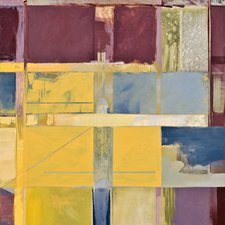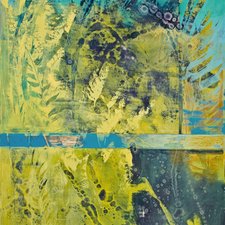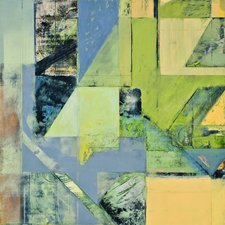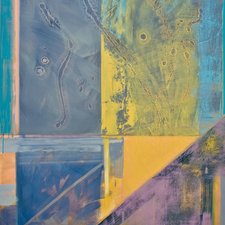Bruce Herman
Bruce Herman, Artist Statement
I live on Cape Ann, a peninsula north of Boston, where the land has been scoured by the retreat of the great Laurentide glaciers over twenty thousand years ago, leaving behind a deposit of granite boulders and palisades along the seacoast. Since first visiting the cape, I’ve felt a tug on my imagination by the raw beauty of the land, the sea and sky, and the ever-changing weather here. A tidal estuary at the end of our street, Walker Creek, marks time with its tides as it laps against the granite (which itself marks a different time – geologic time).
T.S. Eliot (in The Four Quartets) says:
You are not here to verify,
Instruct yourself, or inform curiosity
Or carry report. You are here to kneel
Where prayer has been valid. And prayer is more
Than an order of words, the conscious occupation
Of the praying mind, or the sound of the voice praying.
After more than thirty-five years here, there is still a tidal pull for me on Cape Ann; a stability in the midst of constant change. The ancient rocks and slow-growing lichens; the reliable coming and going of seasons and sea have set in motion something in me, even as I’ve stayed in place.
I’ve tried and failed countless times to capture this place in straightforward landscape painting, but like Eliot, I’ve discovered that I am not here to simply record or verify or instruct. I am here to pray, to witness. And I’ve tried to bear witness to something impossible to articulate – even for a great poet, much less a painter. It’s that presence which marks our lives and our land, and also a feel of great absence – eons and all living things passing, yet the persistent hope that comes from this underlying permanence, this solid truth: the beauty of this place has its origin in a living God.
VL28 - Presence and Absence - New Works by Bruce Herman - 11-13-2010 from Cape Ann Museum on Vimeo.
From 2010 Press Release: The Cape Ann Museum is pleased to present a special talk with Gloucester-based artist Bruce Herman on Saturday, November 13 at 3:00 p.m. in the Folly Cove Auditorium. Herman will be discussing his special exhibition Presence/Absence: New Work by Bruce Herman which will be on display until December 12, 2010.
In his 35 years on Cape Ann, Herman has observed and admired the raw beauty of the land, the sea and sky, and the ever-changing weather. The evidence of the glaciers surrounds his home, invoking a different time and inspiring his work. Like the poet T.S. Eliot, who spent summers on Cape Ann, Herman feels drawn to this area, not as one who simply records his surroundings, but as one who witnesses what is impossible to recreate. According to curator Kathrine Page, of Roberts Wesleyan College where Presence/Absence was on exhibition earlier this year, Herman’s art is “deeply rooted in an understanding of theology, philosophy and aesthetics—but it is also strongly physical. He investigates complex layers of texture, color, and form in a vigorous additive and subtractive process, actually employing an electric sander and scraper on his work.” Presence/Absence consists of a series of configurable wooden panels in mixed media, oils, silver and gold leaf; sizes vary from 28 inches to 72 inches.
Bruce Herman received his B.F.A. and M.F.A. from Boston University. He has been on the faculty at Gordon College in Wenham, MA since 1984. His primary focus as a teacher and artist is figurative painting. He received the Junior Distinguished Faculty Award in 1992 and was awarded the first fully-endowed Lothlórien Distinguished Chair at Gordon in 2006. His art has been exhibited internationally and is housed in museums such as the Vatican Museum in Rome, the Armand Hammer Collection in Los Angeles, and locally at the DeCordova Museum in Lincoln, MA.
Funding for these programs was made possible through a grant from the Massachusetts Cultural Council, a state agency which promotes excellence, access, education and diversity in the arts, humanities and interpretive sciences, in order to improve the quality of life for all Massachusetts residents and to contribute to the economic vitality of our communities.



